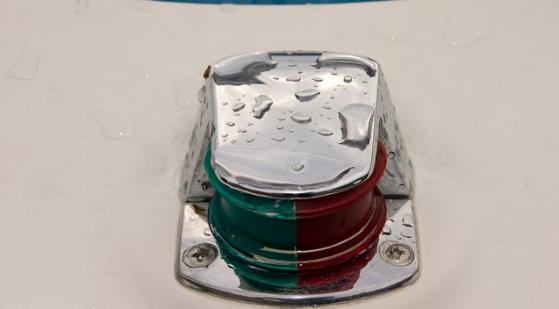With the sea as your constant companion, ensuring your boat navigation lights are in top condition for safe voyages is required. Preventing mishaps on the water starts with maintaining these important lights. Follow these practical tips to keep your boat navigation lights shining brightly and your journeys smooth and secure.
Key Takeaways:
- Regular Inspection: It is important to inspect your boat navigation lights regularly to ensure they are working properly and are visible to others on the water.
- Cleanliness: Keeping the navigation lights clean from dirt, grime, and residue will help maintain their brightness and visibility.
- Proper Replacement: If any navigation light is not functioning correctly, it is vital to replace it with the correct bulb or LED to ensure safety while boating.
Choosing the Right Navigation Lights
While maintaining your boat navigation lights is necessary, choosing the right ones in the first place is equally important. Here are some tips to help you make the right decision.
Types of Navigation Lights
When selecting navigation lights for your boat, it’s imperative to understand the different types available. The most common types include sidelights, masthead lights, stern lights, and all-around white lights.
Sidelights are red and green lights located on the sides of the boat, while the masthead light is a white light placed at the front. The stern light is a white light at the rear, and the all-around white light is used for boats under sail. Recognizing the purpose of each light will help you ensure your boat is properly equipped for safe navigation.
Considerations for Selecting the Right Lights
When choosing navigation lights for your boat, consider factors such as visibility, brightness, power consumption, and durability. It’s important to select lights that are bright enough to be seen from a distance and have low power consumption to preserve your boat’s battery life. Also, choose lights that are durable enough to withstand harsh marine conditions and provide reliable performance when needed.
Navigation lights are not just for compliance with regulations; they are imperative for your safety on the water.
Installation and Mounting
Assuming you have purchased the correct navigation lights for your boat, the next step is proper installation and mounting.
Proper Mounting Techniques
Any time you are mounting navigation lights on your boat, make sure they are visible from all angles. The lights should be mounted to minimize shadows and obstructions, providing the best visibility in all conditions. Additionally, ensure that the lights are securely attached to the boat to prevent them from shifting or becoming misaligned while you are out on the water.
Avoiding Common Installation Mistakes
Techniques such as using the wrong size screws or bolts, not sealing the wiring properly, or installing lights in locations where they can be easily damaged are common mistakes to avoid. Improper installation can lead to malfunctioning lights or even safety hazards while boating.
Maintenance Essentials
Regular Cleaning and Inspection
To ensure your boat navigation lights function properly, you must regularly clean and inspect them. Start by wiping down the lenses with a soft cloth and soapy water to remove any dirt or salt buildup. Inspect the lights for any cracks, water intrusion, or loose connections. Make sure the light bulbs are not damaged and are securely in place.
Replacing Bulbs and Fuses
For optimal visibility on the water promptly replace any burnt-out bulbs or blown fuses in your marine navigation lights. Keep spare bulbs and fuses on board so you can easily replace them when needed. Make sure to use the correct type and wattage of bulbs and fuses recommended by the manufacturer to maintain the proper functioning of your navigation lights. Regularly check the bulbs and fuses to ensure they are in good working condition.
Checking Electrical Connections
Fuses are an important concern in protecting your boat’s electrical system, including the navigation lights. Regularly check the fuses to ensure they are not corroded or damaged. Keep spare fuses on board in case replacements are needed. Inspect the electrical connections for any signs of corrosion and make sure they are tight and secure.
Loose connections can cause the lights to flicker or not work at all, compromising the safety of your vessel on the water
Troubleshooting Common Issues
Now, let’s address some common issues you may encounter with your boat navigation lights and how to troubleshoot them effectively
Dealing with Dim or Flickering Lights
Dealing with dim or flickering lights can be frustrating and potentially dangerous while out on the water. The most common cause of this issue is a poor connection, usually due to corrosion. Start by checking the wiring connections to ensure they are clean and secure. If you notice any corrosion, gently clean the affected areas with a wire brush or sandpaper.
Fixing Corrosion and Water Damage
Corrosion can occur due to exposure to saltwater or moisture over time, leading to poor electrical connections and dim lights. To address this issue, carefully inspect all electrical components for signs of corrosion and clean them with a suitable corrosion inhibitor or electrical contact cleaner. Ensure that all connections are well insulated and protected from water intrusion to prevent future damage.
Upgrading and Customizing
Installing LED Lights for Energy Efficiency
Upgrading your boat navigation lights to LED lights is a smart choice for improving energy efficiency. LED lights use significantly less power than traditional incandescent lights, helping to conserve your boat’s battery power and reducing the need for frequent bulb changes. They also provide a brighter and crisper light that enhances visibility on the water, making it easier for you to navigate safely, especially during nighttime or low visibility conditions.
Adding Additional Lighting Features
The addition of extra lighting features can enhance both the aesthetic appeal and functionality of your boat. Consider installing deck lights, underwater lights, or accent lights to illuminate different areas of your boat and create a more inviting atmosphere. Deck lights can improve safety by illuminating walkways and stairs, while underwater lights can add a touch of elegance and attract marine life for a mesmerizing experience.
FAQ
Q: Why is it important to properly maintain boat navigation lights?
Properly maintained boat navigation lights are necessary for safe boating, especially during low visibility conditions or at night. They help other vessels identify the direction of travel, size, and type of your boat, reducing the risk of collisions.
Q: How often should boat navigation lights be checked for proper functioning?
It is recommended that boat navigation lights on the water be checked before each outing to ensure they are working correctly. Additionally, regular inspections should be conducted to clean the lenses, check for any signs of wear or corrosion, and replace any bulbs that are dim or flickering.







